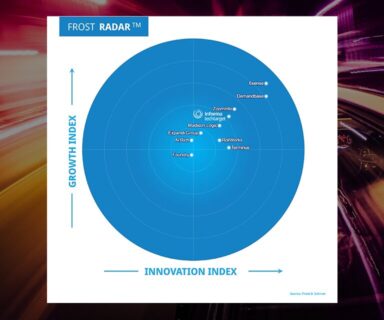 Last week, we hosted our first Boston-area Priority Engine User Group of 2019. At our user group events, customers are invited to share their experiences and learn from one another in a “roundtable” setting. From sharing best practices and success they have achieved to posing questions to peers, the goal is for every attendee to leave with new insight and ideas.
Last week, we hosted our first Boston-area Priority Engine User Group of 2019. At our user group events, customers are invited to share their experiences and learn from one another in a “roundtable” setting. From sharing best practices and success they have achieved to posing questions to peers, the goal is for every attendee to leave with new insight and ideas.
At this most recent event, both marketing and sales professionals shared how they are using Priority Engine’s intent data to fuel ABM campaigns and beyond. There were three key themes that attendees referenced as being crucial to ABM success:
1) Strong sales and marketing alignment
Many organizations face the challenge of marketing and sales alignment. However, having both groups on the same page is critical to ABM. With an account based approach, both groups are messaging the same accounts and people, often concurrently, making it imperative for the teams to be in lock-step. One attendee shared the steps her organization took to achieve the necessary alignment:
- Clear goals: Having clearly defined KPIs ensure both teams are working towards the same goal and agree on what “success” looks like. In this example, both sales and marketing are working towards driving trial registrations. Marketing and sales outreach happens in tandem to the same accounts, but the message is always driving towards the same end goal of securing a trial. Additionally, both teams understand the conversion rates of leads to trials to customers, making it easier to measure progress along the way.
- Defined Service-Level Agreements: Service-Level Agreements (SLAs) between marketing and sales ensure that both departments are taking the necessary steps to meet those agreed-upon goals. In this instance, marketing was tasked with providing a number of leads for sales each week, and the sales team was required to reach out to new leads within a two-day turnaround time with a mix of calls and emails.
- Enablement and training: Intent tools like Priority Engine provide an abundance of account-level insight that can be used to customize outreach, but a true ABM approach requires both sales and marketing to use the data effectively. Training on workflow, tools, ad data use with internal (marketing, sales and product) and external (TechTarget and their agency) stakeholders was key in enabling all teams and ensuring alignment from the get-go.
2) Account prioritization
We can all agree that focusing on accounts with the highest propensity to buy is the best use of marketing and sales resources. However, the accounts selected for ABM initiatives are often based on a list of accounts sales wants to break into, or accounts that fit a certain profile (industry, size) without any understanding if the account is even in market. User group attendees shared how they are using Priority Engine to prioritize their ABM lists:
- Relevant activity: Uploading an ABM list to the Priority Engine tool allows users to see exactly which accounts are in market for their solution right now based on topically relevant activity on the TechTarget network. The list of accounts researching is stack-ranked based on recent activity and refreshed weekly. This allows marketing and sales teams to get in front of the most engaged ABM accounts in a timely manner, while avoiding wasted time on accounts that aren’t showing purchase intent.
- Vendor engagement: Priority Engine also enables organizations to isolate ABM accounts that are directly engaging with their content or visiting their website. One user group attendee discussed layering website visitors on top of sales territory named account lists, which allows reps to further prioritize and map outreach to their territory accounts in a given week.
- Competitor engagement: Other users are prioritizing ABM accounts in Priority Engine based on activity with competitors. For example, a customer discussed how her company is using Priority Engine to understand which accounts on their list of closed/lost opportunities are actively engaging with top competitors, which gives her team a leg-up when reaching out to prospects.
3) Connecting intent data to the needs of the customer
B2B researchers have come to expect customized outreach – whether it’s in the form of marketing nurture email or a phone call from a rep. Multiple user group attendees discussed how they are using Priority Engine’s intent data to better understand the needs of the customer, and personalize messaging accordingly.
One user discussed how they segment their ABM lists based on sub-topic of research. Then, those accounts are served content closely tied to that sub-topic through a nurture campaign. The content is all educational and provides prospects truly useful information, with the last email pointing to the overall resources section. The goal is to provide content that will help solve a prospect’s problem and build trust, with the vendor branding being very subtle.
The above three themes are just scratching the surface of how Priority Engine is helping IT vendors achieve ABM success. If you’re interested in learning more or attending an upcoming user group in your area, please reach out today!



